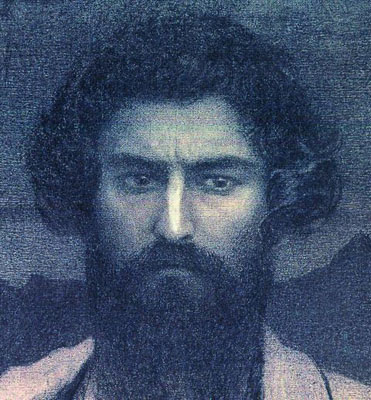Giovanni Segantini (Arco 1858 - Engadina 1899)
His mother, who died in 1863, came from an old mountain family. His father, a commoner, left for Milan, to seek his fortune with another son, leaving Segantini behind. At age seven he ran away and was later found perishing of cold and hunger; he began to earn his bread by herding flocks in the hills and there he spent his long hours of solitude in drawing.As news of his fame reached the ears of a syndic, Segantini was sent back to Milan; unable to endure domestic life, he soon escaped again, and led the life of wanderer until, at Arco, he met up with his half-brother, who offered him the job of cashier in his grocery store. After more flights and more returns, Segantini finally settled in Milan to attend classes at the Brera. In Milan he was able to earn a living by teaching art and painting portraits.
His first picture, The Choir of Sant Antonio , was noticed for its powerful quality. After painting this, however, he shook himself free by degrees of academical teaching, as in his picture The Ship. He subsequently painted The Falconer and The Dead Hero, and then settled in Brianza, near Como. There he gave himself up to the study of mountain life, and became in truth the painter of the Alps.
At this time he painted the Ave Maria, which took a gold medal at the Amsterdam Exhibition (1883), Mothers, After a Storm in the Alps, A Kiss, and Moonlight Effect. Deeply impressed by Millet, the artist nevertheless quickly strove to reassert his individuality, as may be seen in "The Drinking-place," which gained a gold medal in Paris (1889), In the Sheep-fold, By the Spinning-wheel, and Ploughing in the Engadine, for which he was awarded a gold medal at the Turin Exhibition (1892).
Besides those works in which he studied simple effects of light and Alpine scenery, such as Midday on the Alps and Winter at Savognino, he also painted symbolical subjects: The Punishment of Luxury, and the Unnatural Mothers (in the Walker Art Gallery, Liverpool). Segantini died at Maloja in October 1899 while working on his famous piece Alpentriptychon. An exhibition of his works was held in London, and afterwards at Brussels in 1899, and at Milan in 1900.
